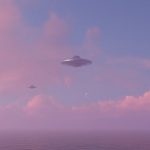Astronomers Observe Young, Radio-Emitting Jets in Distant Active Galaxy0
- From Around the Web, Space
- August 28, 2020
Around five years ago, NASA’s Fermi Gamma-ray Space Telescope detected high-energy gamma rays coming from TXS 0128+554, an elliptical galaxy located some 500 million light-years away in the constellation of Cassiopeia. Purdue University’ Professor Matthew Lister and colleagues have since taken a closer look using NSF’s Very Long Baseline Array (VLBA) and NASA’s Chandra X-ray Observatory.















